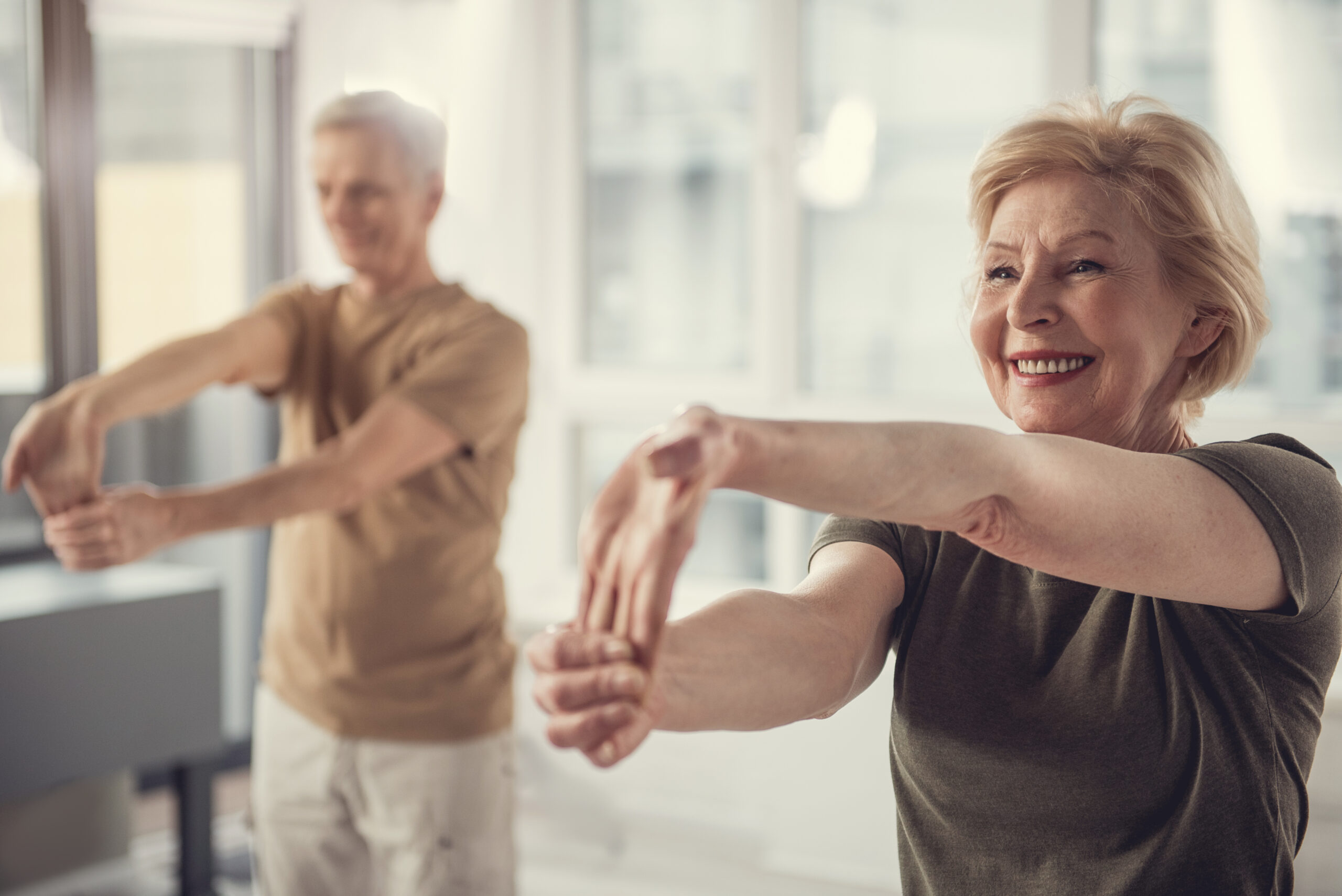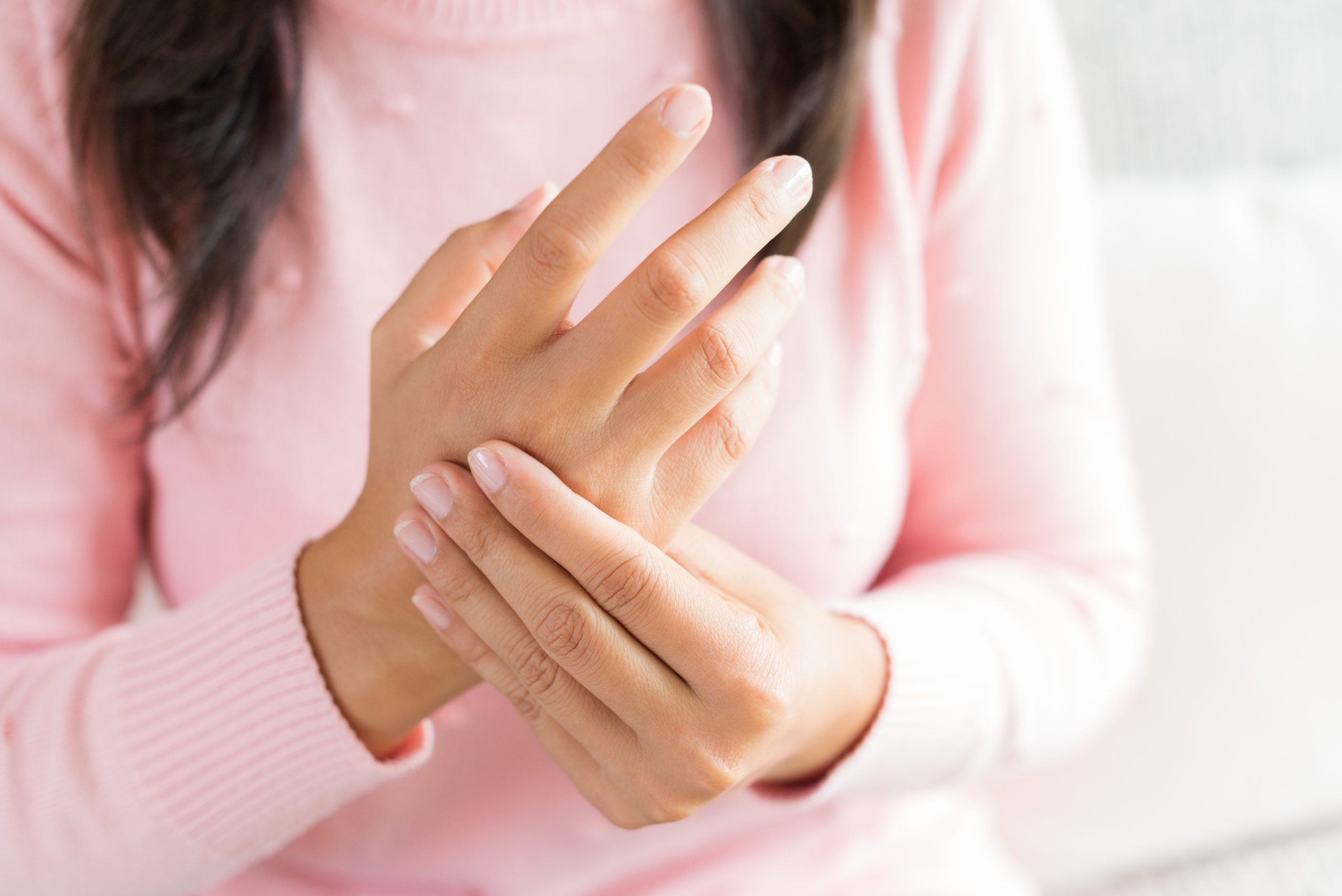No matter the season, your profession, or your hobbies, arthritis in the hands and wrists can be painful. The following hand exercises and stretches can help you keep arthritis pain in your hands to a minimum. The best part? No expensive equipment or vast amount of space are necessary to do these exercises. You can complete each wherever you are and whatever you’re wearing.
1. Finger Bends
This first exercise warms up each finger one by one. We’ll go through each finger on both hands, left to right, one by one.
Hold your hand in a horizontal manner, fingers spread slightly apart and facing away from your face. Bend your thumb in slowly, almost until it reaches the palm of your hand or for as far as is comfortable. Hold for two seconds. Slowly release.
Now do the same with the left index finger, holding for two seconds and then releasing. Do this for each finger on both hands, repeating again if intuition tells you to. Remember, don’t bend so far that you feel any pain.
2. Practice “The Big O”
This one’s simple, at least in theory. All you have to do is form your hand into an “O,” with a visible space between the formed fingers. Hold your hand vertically this time, all fingers pointed up. Curve your thumb up and slightly in, and then bring the other four fingers down to meet the thumb. Hold for a few seconds (take a peek through the circle to channel your inner pirate) and then switch hands.
We recommend doing this a few times with each hand. If you’re someone who spends a lot of time typing, doing this exercise a few times throughout the day can help keep your fingers loose and avoid cramping.
3. The lifted finger
After a vertical and horizontal hand exercise, it’s time to lay the hands flat on a table. This exercise can be done with one hand at a time, or both at once to test your hand-eye coordination. With your fingers flat on the table, lift the thumb and hold for a couple seconds, and then return it to the table. Do the same with the index finger, the middle finger, and so on.
A few repetitions with each hand should do it. This is a great exercise for desk workers and those who work with tools, as it places your hands in a new position and helps you work out any slight discomforts in each finger.
4. Wrist bends
Musicians love this stretch because it alleviates the strain put on the wrist when plucking a stringed instrument or pressing down on the keys of a keyboard or piano. Hold your hands out flat in front of you. With one hand, pull back on the tips of your fingers so that the entire wrist bends slightly backward, in a comfortable but effective stretch. Hold for a second or two if this doesn’t cause pain. Then, repeat with the other hand.
For an inverse of this stretch, place the backs of your hands against each other, fingers facing down. After holding this stretch for a second or two, move back into the wrist bend movement.
5. The fist clench
No, we’re not preparing you to punch anyone, but the fist clench stretch is one that can help loosen your fingers and wrist when they feel tight. Hold your hands out straight as you did in the wrist bend exercise. Then, clench your fists together slowly and lightly, being careful not to force the fingers together or otherwise put more pressure on than your wrists or hands can handle.
If you can, work through 5-10 repetitions on each hand.
Tips for getting the most out of hand exercises
Our first tip is about your subconscious (yes, that has to do with your hands!) After doing these simple hand exercises for even a few days, you may find that you notice your hands more. Not like Will Ferrell during his infamous post-race interview in the movie Talladega Nights, but rather you’ll notice comfortable and uncomfortable positions for your hands, at various points throughout the day. Maybe you clench your fists a lot, or regularly crack knuckles or pull your fingers back with the opposite hand. Each of these can make arthritis pain worse.
Having more awareness of these things is good! Correct the behavior when you catch yourself, and pay attention to what hand positions make you feel the most comfortable. When you find that your mind has wandered to your hands, move your hands into that position. For example, if you naturally curve your fingers together without consciously doing so, you may find it comforting to open your hands flat when you notice you are doing so.
Even if you only hold them flat for a few seconds, the mere act of doing so stimulates your consciousness and you’ll find yourself becoming more aware of how you hold your hands throughout the day and even as you lay in bed at night.
As such, you’ll train yourself to keep your fingers in the “position of least resistance.” With time, this can help your hands to feel less strained and more relaxed.
Second, bring the same awareness to how you sleep at night. If you sleep on your back, you are less likely to be putting added pressure onto your hands. A common scenario with stomach and side sleepers is that they put weight or pressure onto their hands — whether by placing them underneath the part of the pillow where the head lies, between the knees or legs, or up against the headboard or wall at the top of the bed.
If you do sleep on your stomach or side, try to be conscious of how your hands fall (rather, lie) during the night. It’s amazing how much what you don’t do impacts what you do!




















